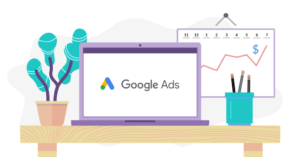Did you know there are a lot of SEO tips and tricks out there and that a lot has changed in the world of Search Engine Optimization (SEO)?
70% of clicked search results are organic, unpaid results? If you want to rank at the top of search results to earn more leads and revenue, you need to invest in Search Engine Optimization (SEO) services — and we’ve compiled some helpful SEO Tips and Tricks to help improve your organic rankings.
In this post, we’ll provide you with seven (7) SEO tips and tricks to help drive more organic traffic to your site.
Table of Contents
1. Speed up your site’s load time
Page load time is a crucial component of SEO. With the development of technology, people expect to have information quickly. When it comes to your site’s load time, 83% of users expect your website to load in three seconds or less.
A slow page frustrates users and ultimately discourages people from buying your product or leaving your website. As businesses become more aware of the opportunities to generate targeted leads and increase revenue through search engine optimization, there is a huge demand for speed.
This means that if your pages are slow, you’re fighting a losing battle for top organic listings, regardless of the quality of your content or your professional website design.
To prevent your business from losing leads to the competition, you must improve your site’s load time. You can use Google PageSpeed Insights to help you see how quickly your site is currently loading. Also, you can see where you can make improvements to your page to help it load more quickly.
Let’s look at a few SEO tips and tricks that will help you improve site load time:
- Reduce image file sizes: If you have dozens of images on your site, the weight of those files can slow your site down. The best way to combat this is to use an image optimizer to reduce your image file size. Image optimizers will cut your image file size without distorting the quality of the picture.
- Enable browser caching: With browser caching, some files from a website load and get stored in the user’s browser when they first visit a site. When the user returns to that page, the page will load faster because the information is already stored.
- Reduce redirects: If your site is continually redirecting to new pages as you create them, it can slow down your website. By reducing the number of redirects, you’ll improve your site’s load time.
- Clean up the code on your site: If you have unnecessary white space or dense coded elements on your website, it can slow it down. By reducing the amount of redundant code, you’ll improve your site’s load time.
- Get rid of non-essential elements that slow down your site. If you’re a WordPress user, consider deactivating plugins you don’t actually need. Also, declutter your sidebar and put only essential widgets there.
By following these optimizations, you’ll improve your site’s load time and keep leads on your page longer. Improving your page speed is one of the best SEO tips and tricks that help you improve your website’s ranking and reach more traffic for your business.
2. Target long-tail keywords to connect with qualified leads
Long-tail keywords are a crucial part of SEO tips and tricks. When users conduct searches, they use keywords to find relevant search results. If you want to appear before leads who are searching for your business, you must utilize long-tail keywords.
These keywords contain three or more words. An example of long-tail keywords is “Buy breathable running socks” (4 words) is an example of a long-tail keyword, whereas “buy socks” is a short-tail keyword. These keywords are specific, If you try to rank for short-tail keywords, which only contain one or two words, it’s harder to know the user search intent. Someone who searches “Socks” could be looking for numerous types of information.
Long-tail keywords will help you rank in relevant search results. You’ll drive more interested leads to your page, which means they’ll spend more time browsing your site. This behavior will send a positive signal to Google that your page is relevant, which will help you rank higher in the search results and drive more traffic.
3. Focus on the user experience
When you’re optimizing for SEO, it’s essential to focus on the user experience. User experience is crucial to improving your SEO ranking because it keeps your audience on your page longer. Your audience will get to know your business and brand more.
As they spend time getting to know your business, they’ll increase their stay time on your page, which sends a positive signal to Google that your page is relevant. As a result, you will rank higher in the search results and reach more valuable leads.
User experience is fundamental to SEO success because when users have a pleasant experience on your website, they have a more favorable opinion of your business. You want to provide a positive user experience to ensure leads remain on your site and view your brand in a favorable light.
So, how do you make your website more user-friendly for your audience?
- Make your navigation easy to use: Users don’t want to struggle to find information on a page. If you want them to remain on your site and read your information, make your navigation simple and easy to use. Good navigation ensures your audience won’t struggle to find information and can easily find what they need.
- Make your website’s design simple and appealing: Your website’s design is the first impression your audience gets of your business. To ensure you don’t deter them from your page, create a website design that is modern, simple, and eye-catching for your audience. A great-looking website will drive traffic to your page and keep them there.
- Make your site easily readable: There’s no point in having a beautifully designed website if your audience can’t read any of the information on it. If you want to improve the user experience on your site, make it easily readable for your audience. This practice ensures they won’t leave your website due to the inability to read your information.
By improving the user experience, you will drive more traffic to your site and keep leads on it longer. This process is an SEO trick that will help you improve your ranking because leads will remain on your website, which sends a positive signal to Google that your page is relevant. Google will boost your site’s ranking to help more leads find your relevant information.
4. Write Unique and Relevant Meta Descriptions for Every Page
One of the most important SEO tips and tricks that most people neglect is the well-crafted meta description. The meta description is the first section that people see when Google serves up your page to search users.
Generally, Google doesn’t like duplicate content. Yes, there are times when there is a need to cite a paragraph or sentence from another site (and link back to the source), but if publishing duplicate content becomes your way of life, you will find it nearly impossible to become a long-term success.
In the same vein, duplicate meta descriptions could get you into trouble. But, even if you don’t get penalized straight away, you’re still not providing a great user experience.
You can’t have the same meta description for a page that talks about email marketing and a page on making sales. There’s a big difference in those topics and your meta descriptions should communicate that fact.
5. Integrate Responsive Design to connect with users on numerous devices
Your audience accesses your site through multiple devices, including computers, tablets, and mobile phones. If you want every user to have a positive experience on your site, you must ensure your website adapts to whatever device a user is using.
Optimizing is especially crucial for mobile users. Google takes mobile-friendliness into account when ranking your site in the search results. If you want to ensure that your website works well for your mobile and desktop users, integrate Responsive Design.
Responsive Design ensures that your website adapts to whatever device a user is using. Your website will adjust to fit the size of the screen so your audience can have a positive experience on your site.
So, why is responsive design relevant to your business?
Responsive design helps improve your ranking because it makes your site more mobile-friendly. Google recently added mobile-first indexing as a determining factor for ranking. If your website isn’t mobile-friendly, you won’t improve your site’s ranking in the search results.
By integrating responsive design, you ensure your website adapts to whatever device your audience uses. This responsive design means that everyone will have a positive experience on your site, which will keep them on your page longer and boost your SEO ranking.
6. Make sure your site is secure
When users are on your website, they want to feel safe when they browse and share their information. If you don’t have a secure site, you will discourage people from wanting to input data. People don’t want to share their personal information or make purchases on sites that could be a potential risk.
If your site is secure, you will see “HTTPS” in the browser name. To get HTTPS in your name, you need to get an SSL Certificate and activate the certificate on your site. This process will make your website secure and encourage people to stay on your site.
An example of search results for “HVAC” highlighting “HTTPS:” in the URLs
Also, Google prefers to rank sites that provide a safe and secure experience higher. Google doesn’t want to direct people to websites that could be a potential risk. If your site is protected, Google is more likely to rank your site higher in the search results.
By making your site secure, you’ll encourage more people to browse and visit your website. It’s a great SEO trick to help improve your ranking.
7. Increase engagement by creating in-depth quality content
Out of all of our SEO tips and tricks, one of the best for improving your SEO ranking is increasing engagement on your website. Content marketing is a great way to drive people to your site and get them to remain on it. By creating in-depth and comprehensive content, you will help drive more traffic to your page.
Content creation is the process in which you provide your audience with valuable knowledge on topics they’re searching for. You can format your content in numerous ways, including videos, blogs, infographics, and ebooks. You’ll want to create a variety of content to attract new leads to your page.
When you create content, you share your knowledge with your audience. It allows you to establish yourself as an authority in your field. It’s one of the most effective SEO tips for newbies looking to boost traffic on their websites.
Content creation is a valuable asset to your SEO campaign. When you create content, you drive leads to your page that are looking for information relevant to your industry. These leads will spend more time on your page, reading your blogs, or watching your videos.
This behavior sends a positive signal to Google that your site is relevant to the user’s query. It will rank you higher in the search results to help more relevant leads find your content. It’s an excellent way for you to gain more brand exposure and earn more valuable leads for your business.
If you’re looking for one of the most valuable SEO tips and tricks, content creation is the answer. Content creation will help you improve your SEO ranking and gain more relevant traffic on your site.
Bonus SEO Tips and Tricks:
Don’t Change Your Domain Name Regularly
The age of a domain or web page is also one of the top SEO tips you should keep in mind. Indeed, it’s crucial for your success. For this reason, don’t constantly change your domain name. Pick one and stick with it, unless there’s a very good reason to change.
That does happen — just don’t make it a regular practice.
Conclusion
I hope you’ve found these SEO tips helpful. If you follow the tips above, you’ll drive better results with these SEO tips and tricks! Performing these SEO tips and tricks will help improve your search rankings and drive more valuable leads to your site.
Finally, learn to focus on and create content around long-tail search phrases (e.g., social media marketing techniques), and not head keywords (e.g., social media). And, don’t forget to make your web pages mobile-friendly.
If you’d like help with your SEO, reach out to us.




